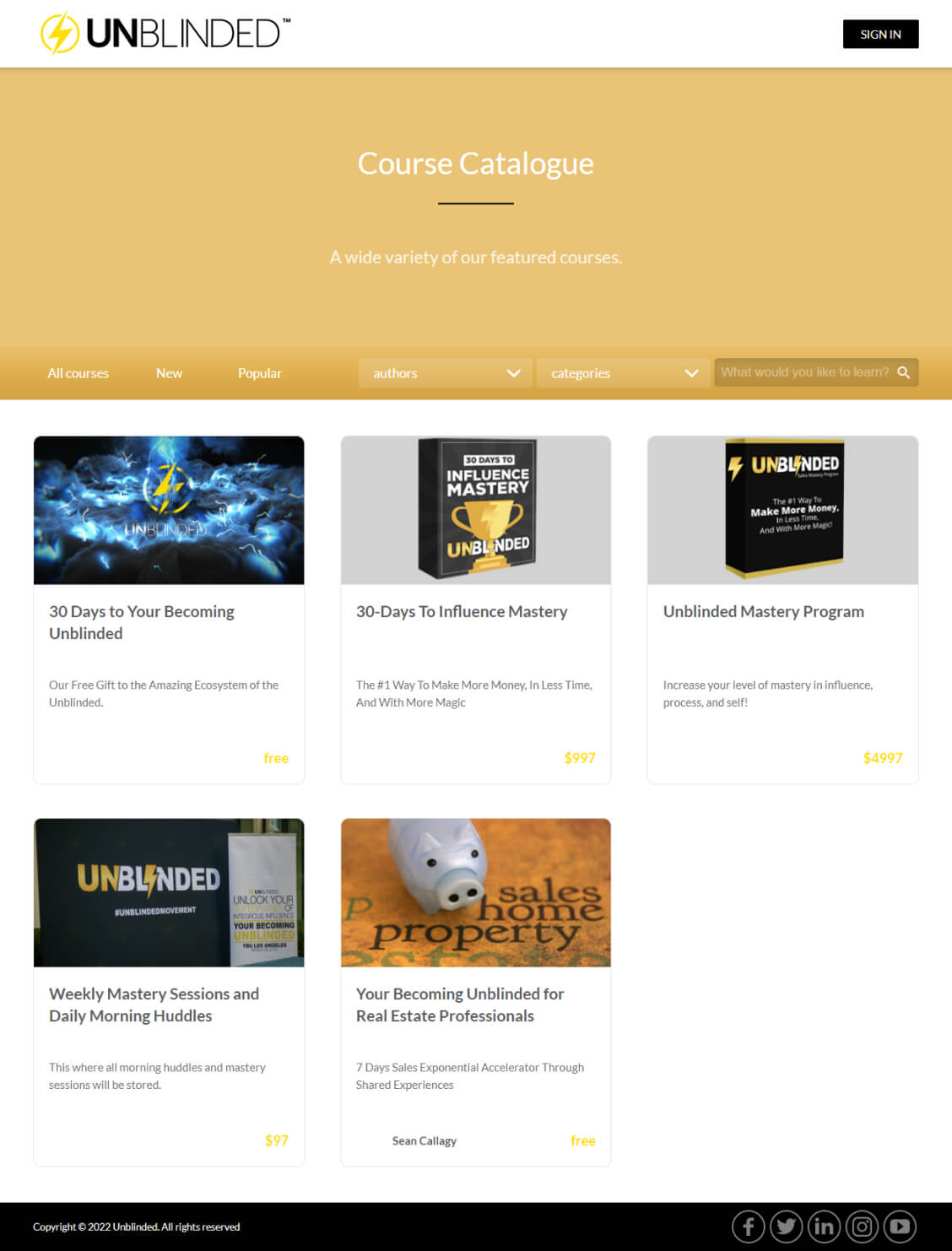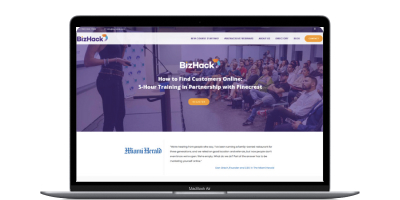150%
YoY Growth
The challenge:
When Unblinded Mastery started with its first big immersion event in 2020, its immediate challenge was finding a suitable platform to accommodate its requirements in the tightest of timeframes. Selling the program before it even existed meant the team needed to build the course as soon as possible.
16
Courses Created
The solution:
LearnWorlds matched Unblinded Mastery’s requirements perfectly, allowing them to start developing their online certification courses immediately while connecting the platform with the tools the team already favored and used.
3400+
Learners Onboarded
The results:
Out of the 1,800 registrants of that live event, 1,500 showed up and enrolled in their mastery program right on the spot. In just seven days, Unblinded Mastery built its course content, filmed all its videos, and launched its core training program with LearnWorlds. The team also attracted some big customers and achieved around 150% growth year over year, despite doing no advertising at all.
Unblinded Mastery
Unblinded Mastery is an organization that offers powerful and innovative human technology which combines heart and math to help people improve their integrous influence. Through the premium and human-interactive training it offers, Unblinded Academy helps people achieve meaningful results in many areas of their personal and professional lives, including leadership, management, marketing, selling, recruiting, and fundraising.
INDUSTRY: Coaching
HQ: New Jersey, USA
PROJECT DURATION: 3.5 Years

Building a Course From Scratch in 7 Days
Getting Everything Up and Running
Building a course from scratch was a long and time-consuming process, and the quest for launching one within a week made things more difficult for Unblinded Mastery. The team needed to find a platform that was as reliable, easy, and intuitive and had a user-friendly dashboard to work with quickly to create a course that was already being promoted at on-site events.
Nurturing an Extensive Network of Learners
Unblinded Mastery was planning to cater to an immense pool of learners and needed to build one dedicated training program to serve them all. Since the academy instructors couldn't be available throughout the day or at multiple places simultaneously, they wanted to create a single successful course and then sell it repeatedly to several people.

Fernando Valencia
Fernando Valencia, Co-Founder, and Chief Co-Creation Officer at Unblinded Mastery, says that Unblinded team's work is called integrity-based human influence, as envisioned by the creator Sean Callagy. Having the role of the trainer leader and sometimes that of the learner, Fernando considers himself a masterful apprentice and a student first. What matters the most to him is helping people achieve their dreams and discovering their "magic".
Empowering Unblinded Academy's Success
Flexible Training That Drives Revenue Growth
The flexibility in the speed and ease of use in preparing the training material with LearnWorlds was crucial for the success of Unblinded Mastery Academy. The feedback that the company gathered as soon as it launched its online academy was overwhelmingly positive as well, and its popularity contributed to doubling its revenue, achieving remarkable growth every year since.

Fernando's advice for other course creators
"Don't expect a course to sell itself. You must sell the course. That may sound very simple and basic, but many course creators think they will create something, and then people will run at it. That does happen, just not most of the time."
Key takeaways
Having a vision as a company is one thing, but using that to move forward so that you can help people transform and change their lives for the better, is quite another.
Unblinded has made this possible by building an online academy that allowed their training to become accessible to a broader audience, encouraging people, both learners and partners, from across the globe to join.
Here's how you can do the same:
Create and deliver content that is honest, true, and unique
Unblinded has made this possible by building an online academy that allowed their training to become accessible to a broader audience, encouraging people, both learners and partners, from across the globe to join.
Here's how you can do the same:
Create and deliver content that is honest, true, and unique
- Be a salesperson and promote your courses as much as possible
- Have a genuine desire to help people through coaching
Through frequent interaction, coaching, and support they offer learners, Unblinded is touching the hearts of millions of people. This is proof that when there are good intentions, success follows.























